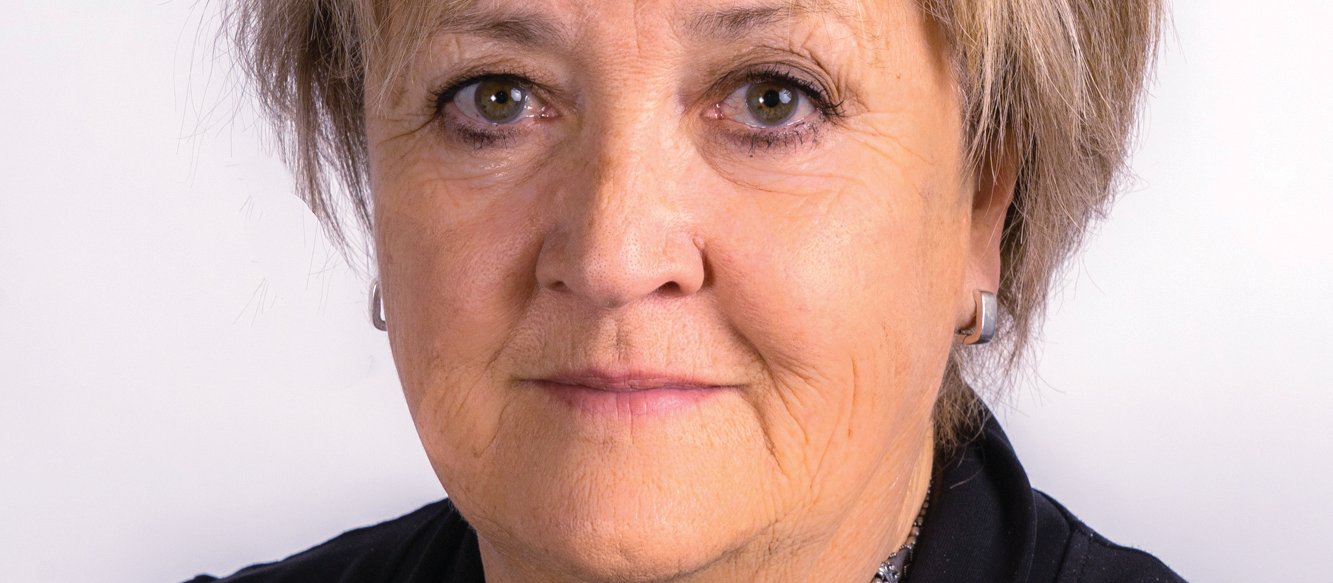Respiratory physician Lutz Beckert considers chronic obstructive pulmonary disease management, including the prevention of COPD, the importance of smoking cessation and pulmonary rehabilitation, and the lifesaving potential of addressing treatable traits. He also discusses the logic of inhaler therapy, moving from single therapy to dual and triple therapy when indicated, as well as other aspects of management
Head-scratching over funding details in nurse practitioner announcement
Head-scratching over funding details in nurse practitioner announcement

“To add a storyline in the context of Shortland Street is just so offensive and pointless”
Nurse leaders hope yesterday’s announcement means all nurse-practitioner trainees will now have their training fully funded, but they await further details.
Yesterday, health minister Andrew Little announced a “doubling” of the number of NPs trained from 50 to 100 by 2024 as part of a suite of health workforce initiatives.
About 90 new NPs are registered each year but only 50 of them get their training fully funded through the Nurse Practitioner Training Programme (NPTP).
New Zealand Doctor Rata Aotearoa reported last month that publicity about nurse leader Jenny Carryer’s frustration over a rejected request to fully fund all NP trainees had led to a phone call from Te Whatu Ora – Health New Zealand chief executive Margie Apa.
The country’s nursing schools had asked for the NPTP scheme, which offers more funded hours of supervised clinical practice and other additional support to trainees, to be extended to cover all NP trainees.
Professor Carryer, executive director of the College of Nurses Aotearoa and Massey University nursing academic, says at this stage it is unclear whether the minister’s announcement means an additional 50 funded places in NPTP or not.
NPTP scheme director and NP Sandra Oster also says she is yet to hear what the announcement means for the programme.
“But I would hope that it is a continuation of the NPTP and the opportunity to make that a truly national programme,” says Ms Oster, a University of Auckland academic and chair of Nurse Practitioners New Zealand.
She says it does look to be a “significant announcement” for NPs so that was welcome.
Professor Carryer says the stresses faced by the health sector, including general practices, is a good reason for fast-tracking nurse-practitioner funding.
“GPs are obviously under enormous stress. Everybody out there is.”
She says she had an email from a general practice NP intern, which was just “heartbreaking”.
“She says she worked previously in two war zones and she’d never experienced the kind of stress she’s experiencing on a daily basis at the practice.”
Shortland Street ‘contempt’
Yesterday’s other announcement of using television soap opera Shortland Street to promote nursing as a career is “beneath contempt”, says Professor Carryer.
“I completely understand that we use social media to attract students, and maybe advertising around that [Shortland Street screening] time might add value.
“But to add a storyline in the context of Shortland Street is just so offensive and pointless.”
Professor Carryer says the show’s portrayal of nursing is so “out of touch”.
“They spend their lives bitching and moaning and fighting about their relationships and doing evil things to each other. There’s no actually nursing on it.”
Professor Carryer says she understand the desire for a “quick fix” of the nursing workforce issues but stresses New Zealand should not rely immigration.
It should be growing its own nurses rather than taking them from countries who need their nurses even more, when there is an estimated shortage of 13 million nurses worldwide.
She says an obvious area that needs looking at “critically” is student nurse attrition, including payment for student nurses on their clinical placements.
Professor Carryer says she was pleased to hear talk yesterday of increased use of kaiawhina/healthcare assistant roles, as she believes there is non-nursing work being done by busy practice nurses that could be done by other health workers.
We're publishing this article as a FREE READ so it is FREE to read and EASY to share more widely. Please support us and the hard work of our journalists by clicking here and subscribing to our publication and website








![Barbara Fountain, editor of New Zealand Doctor Rata Aotearoa, and Paul Hutchison, GP and senior medical clinician at Tāmaki Health [Image: Simon Maude]](/sites/default/files/styles/thumbnail_cropped_100/public/2025-03/Barbara%20Fountain%2C%20editor%20of%20New%20Zealand%20Doctor%20Rata%20Aotearoa%2C%20and%20Paul%20Hutchison%2C%20GP%20and%20senior%20medical%20clinician%20at%20T%C4%81maki%20Health%20CR%20Simon%20Maude.jpg?itok=-HbQ1EYA)
![Lori Peters, NP and advanced health improvement practitioner at Mahitahi Hauora, and Jasper Nacilla, NP at The Terrace Medical Centre in Wellington [Image: Simon Maude]](/sites/default/files/styles/thumbnail_cropped_100/public/2025-03/2.%20Lori%20Peters%2C%20NP%20and%20advanced%20HIP%20at%20Mahitahi%20Hauora%2C%20and%20Jasper%20Nacilla%2C%20NP%20at%20The%20Terrace%20Medical%20Centre%20in%20Wellington%20CR%20Simon%20Maude.jpg?itok=sUfbsSF1)
![Ministry of Social Development health and disability coordinator Liz Williams, regional health advisors Mary Mojel and Larah Takarangi, and health and disability coordinators Rebecca Staunton and Myint Than Htut [Image: Simon Maude]](/sites/default/files/styles/thumbnail_cropped_100/public/2025-03/3.%20Ministry%20of%20Social%20Development%27s%20Liz%20Williams%2C%20Mary%20Mojel%2C%20Larah%20Takarangi%2C%20Rebecca%20Staunton%20and%20Myint%20Than%20Htut%20CR%20Simon%20Maude.jpg?itok=9ceOujzC)
![Locum GP Helen Fisher, with Te Kuiti Medical Centre NP Bridget Woodney [Image: Simon Maude]](/sites/default/files/styles/thumbnail_cropped_100/public/2025-03/4.%20Locum%20GP%20Helen%20Fisher%2C%20with%20Te%20Kuiti%20Medical%20Centre%20NP%20Bridget%20Woodney%20CR%20Simon%20Maude.jpg?itok=TJeODetm)
![Ruby Faulkner, GPEP2, with David Small, GPEP3 from The Doctors Greenmeadows in Napier [Image: Simon Maude]](/sites/default/files/styles/thumbnail_cropped_100/public/2025-03/5.%20Ruby%20Faulkner%2C%20GPEP2%2C%20with%20David%20Small%2C%20GPEP3%20from%20The%20Doctors%20Greenmeadows%20in%20Napier%20CR%20Simon%20Maude.jpg?itok=B0u4wsIs)
![Rochelle Langton and Libby Thomas, marketing advisors at the Medical Protection Society [Image: Simon Maude]](/sites/default/files/styles/thumbnail_cropped_100/public/2025-03/6.%20Rochelle%20Langton%20and%20Libby%20Thomas%2C%20marketing%20advisors%20at%20the%20Medical%20Protection%20Society%20CR%20Simon%20Maude.jpg?itok=r52_Cf74)
![Specialist GP Lucy Gibberd, medical advisor at MPS, and Zara Bolam, urgent-care specialist at The Nest Health Centre in Inglewood [Image: Simon Maude]](/sites/default/files/styles/thumbnail_cropped_100/public/2025-03/7.%20Specialist%20GP%20Lucy%20Gibberd%2C%20medical%20advisor%20at%20MPS%2C%20and%20Zara%20Bolam%2C%20urgent-care%20specialist%20at%20The%20Nest%20Health%20Centre%20in%20Inglewood%20CR%20Simon%20Maude.jpg?itok=z8eVoBU3)
![Olivia Blackmore and Trudee Sharp, NPs at Gore Health Centre, and Gaylene Hastie, NP at Queenstown Medical Centre [Image: Simon Maude]](/sites/default/files/styles/thumbnail_cropped_100/public/2025-03/8.%20Olivia%20Blackmore%20and%20Trudee%20Sharp%2C%20NPs%20at%20Gore%20Health%20Centre%2C%20and%20Gaylene%20Hastie%2C%20NP%20at%20Queenstown%20Medical%20Centre%20CR%20Simon%20Maude.jpg?itok=Z6u9d0XH)
![Mary Toloa, specialist GP at Porirua and Union Community Health Service in Wellington, Mara Coler, clinical pharmacist at Tū Ora Compass Health, and Bhavna Mistry, specialist GP at Porirua and Union Community Health Service [Image: Simon Maude]](/sites/default/files/styles/thumbnail_cropped_100/public/2025-03/9.%20Mary%20Toloa%2C%20Porirua%20and%20Union%20Community%20Health%20Service%20in%20Wellington%2C%20Mara%20Coler%2C%20T%C5%AB%20Ora%20Compass%20Health%2C%20and%20Bhavna%20Mistry%2C%20PUCHS%20CR%20Simon%20Maude.jpg?itok=kpChr0cc)